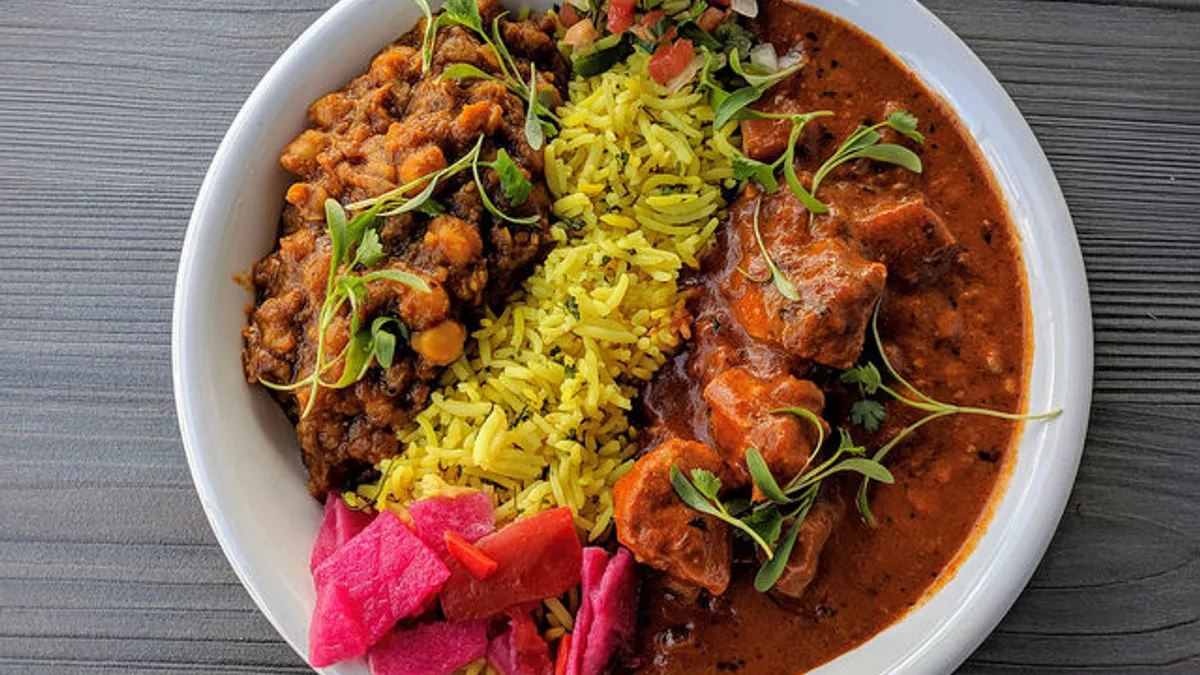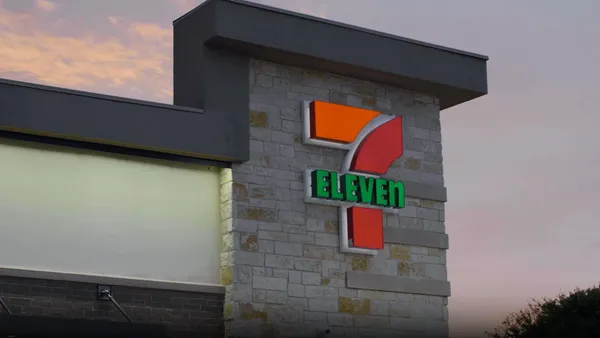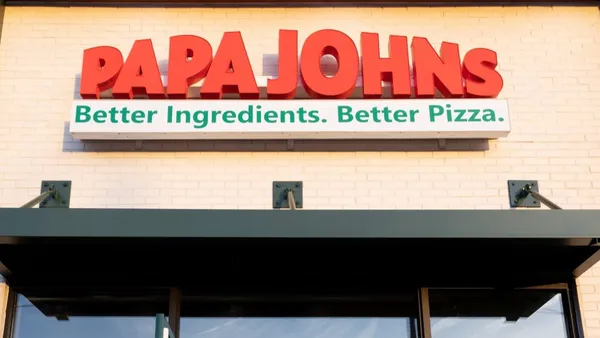Dive Brief:
- Indian fast casual restaurant Curry Up Now plans to add 100 new units to its footprint by the end of the year, according to a company release. The San Francisco-based chain also i set to launch 200 new locations in 2020.
- The company has close to 50 franchised and corporate locations in development across the country and has pending franchise deals in more than a dozen states. It expects to opens stores in San Ramon and Irvine California, as well as Atlanta, Georgia, in spring of this year.
- Most recently, Curry Up Now secured its first location in Sacramento, the company announced Wednesday.
Dive Insight:
Curry Up Now's expansion push comes just a few years after its acquisition of rival Indian fast casual player Tava Kitchen, as well as an undisclosed investment from Kitchen Fund. The restaurant's healthy expansion clip, which has ramped up since Curry Up Now's debut as a single food truck in 2009, reflects growing demand for authentic ethnic cuisine.
Curry Up Now also follows the popular model of making Eastern cuisine more accessible to American diners by serving it in familiar formats, such as the chain's tikki masala burrito. And though the segment hasn't yet exploded in the U.S. — the Washington Post reported that while there are more than 40,000 Chinese restaurants nationwide, there are only around 5,000 Indian eateries — it shows promise.
Curry flavors are becoming more mainstream, with popular salad chain Sweetgreen serving up a curry cauliflower bowl and regional players like Indikitch finding success in a Chipote-style fast casual model. It's possible that fast casual is the best segment for this cuisine, Business Insider posits, since traditional Indian cuisine requires advanced culinary techniques, which results in heftier menu prices — a barrier to entry for first-time consumers.
Fast casual has already proven to be a path to growth for Mediterranean cuisine, with Middle Eastern cuisine increasing 32% on U.S. menus between 2015 and 2017, according to Mintel's 2018 U.S. Flavor Trends report. The build-your-own bowl model is a fitting vehicle for the cuisine, since consumers equate the concept with creative personalization and healthy meals, according to a Packaged Facts report. Thanks to the lasting impact of the once ubiquitous Mediterranean diet, many American consumers conflate the cuisine with healthy eating, driving demand.
The space is quickly growing, with chains vying for increased market share and gobbling up competitors. Hummas and Pita Co. recently landed a 100-unit expansion deal, for example, and Cava's buy of rival Zoe's Kitchen has increased its footprint to almost 330 units nationwide.
Though Indian restaurants in any category have yet to see this much activity in the U.S., Curry's deal with Tava and subsequent funding suggests that the segment could have legs. And with consumer demand for ethnic food flavors showing no sign of waning, the timing could be right for Indian cuisine to step into the spotlight. Innova Market Insights found that between 2013 and 2017, products made with ethnic flavors jumped 20% — especially dishes coked with flavors from Mexico, India and Spain. Comex also predicts listed "A Passage to India" as one of its flavor trend predictions for 2019, highlighting vegetable curry, mango lassi and masala spiced donuts.
Correction: A previous version of this article misstated the status of Curry Up Now's Sacramento location. It will open this year.















